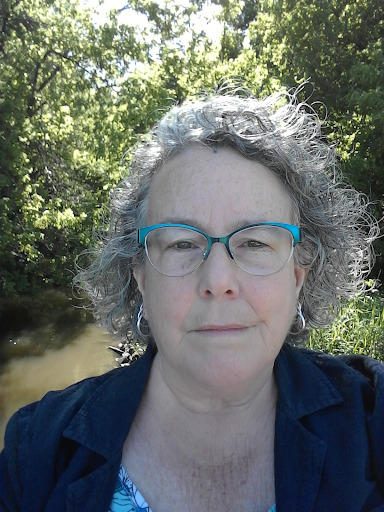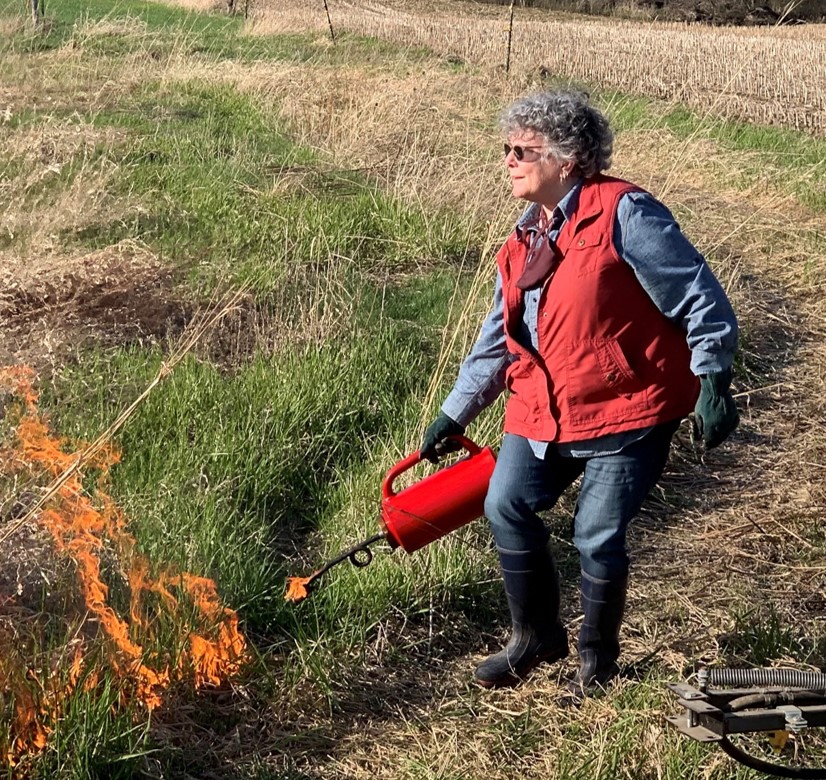Partner Spotlight: Dr. Katherine Frels - Wintry Breeder (Oct 2021)

Early this year, Dr. Katherine Frels left her position as Research Assistant Professor at the University of Minnesota Department of Agronomy and Plant Genetics and moved “south” to work on small grains breeding and genetics in the Department of Agronomy and Horticulture at the University of Nebraska-Lincoln as Assistant Professor.
At UMN, her research focused on the development of winter annual oilseeds. She told GLBW recently that although she’s not working on oilseeds she continues to work in winter annuals and her “passion for keeping the ground covered over the winter hasn’t diminished.” Her UNL program focuses on winter wheat, winter barley, and winter triticale. “The winter triticale market is really taking off right now with the push for cover crops, and I hope to use the lessons learned from my time working with pennycress and camelina to position our winter triticale program for continuous living cover systems.”
Last fall before her move, UMN graduate student Katie Black interviewed Dr. Frels about her work on winter oilseeds and their potential to provide new income opportunities for producers while also improving soil and water quality. Read on for that and if you’d like to keep up with Dr. Frels’ important wintry research, follow her on twitter @FrelsintheField and @Huskerwheat. Thanks, Katherine!!
Why do we need winter annuals on the landscape?
This is something most people don’t think about, and when you explain it, people say, “This makes so much sense! Why aren’t people doing it?”
It comes down to the fact that in the Midwest, we have a short growing season. What this means is that our fields are bare and brown for most of the year. This means our soil can erode and take nutrients like nitrogen with it. These nutrients end up in our waterways and create pollution. By having something on the ground, we can prevent that pollution. Those benefits are true for cover crops in general. We’re looking at winter annuals specifically because of the cold climate. When it comes down to it, farming is a business. Something we have always tried to reach is a sustainable system, as well as a profitable one. With green living cover like winter oilseeds, you get the unique benefits of having lots of different crops on the landscape – from increased soil health to insects to birds – and also get the financial benefits for the farmer. By making a relatively simple change, I think we can get a system wide change.
What are the challenges and opportunities associated with winter annuals?
Pennycress is a pretty wild, weedy species -and it will be like that for a while. Think about how long wheat took to become the wheat we grow and know today. We haven’t been growing pennycress for many seasons. Every year is a new surprise. And unlike other crops, we don’t have a historical knowledge base that allows us to predict what will happen in Minnesota. We don’t get consistent results, and we don’t know if the traits we are selecting for is due to the environment or the genetic makeup of this particular line.
Despite those challenges, we have a chance to rapidly domesticate a new crop, and use all these previously developed tools and other plants to understand the genes in pennycress and camelina. That’s never happened before – we’ve never tried to domesticate a crop like this before. That, plus the fact that we are doing this in such an interdisciplinary way, means that this will be an opportunity to really change the way we approach creating new crops.
Tell me more about what you work on. What does a typical day look like for you?
I am the plant breeder for the winter annual oilseeds program. That means I am working on the improvement of pennycress and camelina. In this role, I really get to work with everyone in the program working on winter annual oilseeds. I work directly with the genomics team. I work with the agronomy team to help them understand how the traits we are adding to the breeding program will make their programs more successful. I also work with the end use team to add value to these crops by making sure these crops have a product that is valuable and can be sold to consumers.
Right now [September 2020], I am coming off of planting season where I spent the last week on a planter all over the state of Minnesota putting in trial plots. This winter, there will be a lot of lab work and analyzing the data, doing greenhouse work, making new crosses. And in the spring, we collect data on the flowering time of the trials we planted in the fall. I really get to do a little of everything. As a plant breeder, you have to have good knowledge of agronomy and soil science so you know how trials are interacting in farmers’ fields. You have to be a plant pathologist and entomologist to identify what could be causing problems in your trials. And on top of that, you are also a geneticist.
Last question – What do you envision as the future of our agricultural system?
I envision a system where it is easy to keep living cover on the ground year round. I think by getting that green living cover, we have the opportunity to create new products – maybe foods or other commercial products – and also get the environmental benefits we need.
Partner Spotlight: Laura Paine - Perennial Grazier (Nov 2021)
 Laura has worked in perennial agriculture, specifically in managed grazing, for nearly 30 years. She currently serves as the Outreach Coordinator of the Grassland 2.0 project, a UW-Madison led, USDA-funded SAS CAP project that seeks to reshape Midwestern agriculture as a perennial, livestock-integrated, grazing-based system. She also co-chairs GLBW’s Midwest Perennial Forage Working Group. Last fall, UMN graduate student Katie Black asked Laura about her work and why being a part of GLBW matters to her.
Laura has worked in perennial agriculture, specifically in managed grazing, for nearly 30 years. She currently serves as the Outreach Coordinator of the Grassland 2.0 project, a UW-Madison led, USDA-funded SAS CAP project that seeks to reshape Midwestern agriculture as a perennial, livestock-integrated, grazing-based system. She also co-chairs GLBW’s Midwest Perennial Forage Working Group. Last fall, UMN graduate student Katie Black asked Laura about her work and why being a part of GLBW matters to her.
Tells us more about your current role at Grassland 2.0.
Grassland 2.0 is a large five-year project funded by the USDA Sustainable Agriculture Systems program that asks the question, Tell us what a food system in 2050 would look like and tell us how you would get there? We started with the premise that in the Midwest, to have sustainable systems, we need integrated livestock and cropping systems that incorporate perennial forage crops. Having more perennials on the landscape is the only way we can achieve the water quality, habitat, and carbon sequestration improvements we need. We know that there are significant barriers and this project is about understanding what some of the obstacles are by engaging stakeholders in finding solutions and identifying opportunities.
To do this effectively, we are thinking big and addressing top-down issues like federal policy and supply chains, as well as engaging citizens in local, bottom-up conversations. We are currently working on creating learning hubs as focal points for place-based discussions about these topics in five communities in Wisconsin, Minnesota, and Illinois. We’re also really interested in talking to farmers throughout the region who have made the transition [to integrated livestock systems] and highlighting their stories through podcasts and videos.
I have worked with managed grazing systems for a couple of decades. We know the science and we know the agronomy. We know that these systems work both economically and in terms of addressing erosion and water quality issues. Yet there is something that hinders people from adopting these systems. I think one of the most important contributions this project can make is shedding light on the social, psychological, and policy barriers to change.
In your own words, why should we care about perennial forage?

We need to work towards a stable agro-ecosystem that mimics the natural ecosystems that we have all but replaced in the Upper Midwest. Although we don’t use original species, well-managed grazing systems can mirror the functional aspects of prairies and native grasslands. We can have all of these ecological benefits – reduced chemical and pesticide use, improved animal health, higher quality products, better water quality, and carbon sequestration using a system that generates a reliable income for farmers.
From an economic and agronomic sense, I don’t see a superior system out there. This is where agriculture in this region needs to go if we want to move towards addressing climate change and other environmental challenges we’re facing.
What do you value about being a Green Lands Blue Waters partner?
The ecologist in me is always thinking about relationships. We can be stronger if we – the farmers, state governments, academics, organizations – all work together. Green Lands Blue Waters has built a community around the shared goal of continuous living cover and a regenerative agriculture system. It’s been really valuable to broaden my network of colleagues and partners with people throughout the region, and I value the relationships I’ve gained in the last 10+ years of being involved with Green Lands Blue Waters.